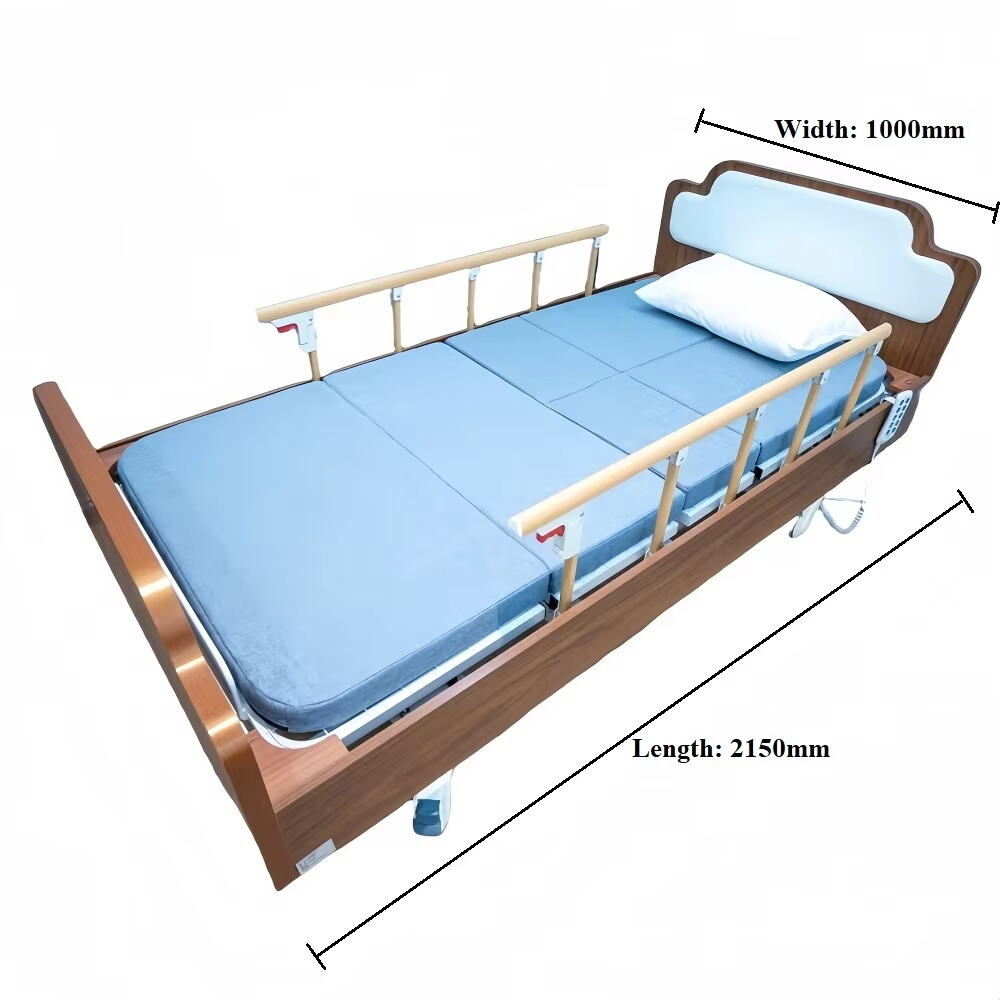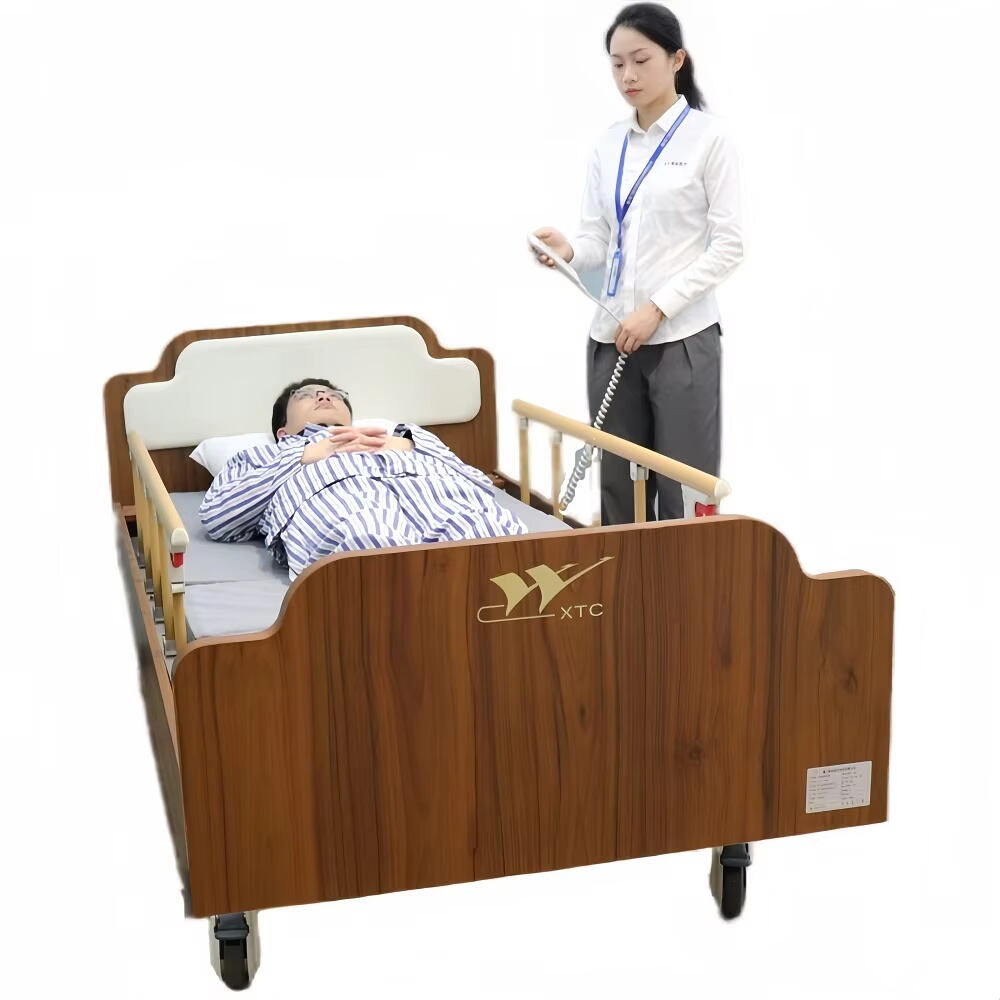Enhancing Patient Comfort and Long-Term Care
When it comes to ensuring optimal care for bedridden patients, comfort and prevention are paramount. As healthcare systems continue to evolve and more patients receive care at home or in long-term facilities, the role of advanced medical equipment becomes increasingly critical. An Antidecubitus Bed is one such innovation that significantly contributes to better outcomes for those who are immobile or at high risk of developing pressure ulcers. These specialized beds are designed to offer targeted support and continuous pressure relief, making them a wise investment for medical institutions and caregivers alike.
Improving Overall Patient Health with Antidecubitus Beds
Supporting Circulatory Health and Skin Integrity
One of the primary benefits of an Antidecubitus Bed lies in its ability to promote healthy blood circulation. For patients confined to bed for long periods, restricted blood flow can lead to tissue damage and the development of painful pressure sores. These beds are engineered with alternating pressure or low air loss technologies that help distribute body weight evenly and alleviate pressure from high-risk areas such as the back, hips, and heels. As a result, they play a crucial role in preserving skin integrity and reducing the risk of complications.
Encouraging Better Sleep and Rest Cycles
Quality sleep is essential to healing and well-being. Antidecubitus Beds enhance comfort levels by adapting to the patient's body shape and position, reducing discomfort caused by prolonged pressure. Many models also offer customizable firmness levels, tilt adjustments, and responsive air systems that minimize sleep disturbances. This allows patients to rest more soundly, which can have a direct impact on recovery speed and mental health.
Practical Benefits for Caregivers and Healthcare Providers
Reducing the Physical Burden on Care Staff
Caring for patients at risk of pressure sores often involves frequent repositioning to prevent ulcer formation. An Antidecubitus Bed automates much of this process, especially those equipped with advanced features such as automatic pressure adjustments and movement schedules. This significantly reduces the physical strain on nurses and caregivers, allowing them to focus on other critical aspects of patient care.
Enhancing Monitoring and Early Intervention
Some Antidecubitus Beds come with built-in sensors that track patient movements and alert staff to prolonged inactivity. These intelligent systems allow for proactive responses, reducing the likelihood of complications. Real-time data collection also supports better clinical decisions and provides documentation for long-term health assessments.
Economic Advantages of Investing in Antidecubitus Beds
Lowering Long-Term Treatment Costs
While the initial investment in an Antidecubitus Bed might seem substantial, the long-term savings are notable. Preventing pressure ulcers eliminates the need for costly wound care, surgical interventions, and extended hospital stays. For healthcare facilities, this translates into lower patient care costs and improved resource allocation.
Increasing Equipment Lifespan and Reliability
Modern Antidecubitus Beds are built with high-quality materials and advanced mechanics, making them highly durable. Many come with warranties and service plans that ensure they remain in top condition for years. This durability makes them a reliable asset in both home-care and institutional environments.
Meeting the Needs of Diverse Patient Populations
Adapting to Different Medical Conditions
Antidecubitus Beds are versatile enough to support patients with a wide range of medical issues, from spinal injuries to post-operative recovery and chronic illnesses. Their customizable features make it easier to provide individualized care plans tailored to each patient's needs. For patients who spend most or all of their time in bed, these beds can make a profound difference in quality of life.
Supporting Both Short-Term and Long-Term Care
Whether a patient is recovering from surgery or managing a long-term disability, an Antidecubitus Bed offers adjustable solutions that can evolve with their needs. The bed’s technology is designed to adapt over time, offering consistent support throughout a patient’s recovery or chronic care journey. This adaptability ensures that the same bed can be used across various stages of medical care.
Technological Innovations in Modern Antidecubitus Beds
Smart Features for Enhanced Control
The integration of smart technologies in Antidecubitus Beds has revolutionized how care is administered. Touchscreen interfaces, remote-control access, and automated pressure adjustments make it easier than ever for patients and caregivers to manage comfort settings. Some beds are even compatible with digital health platforms, allowing healthcare professionals to monitor patient conditions remotely.
Sustainability and Energy Efficiency
Newer models of Antidecubitus Beds also prioritize energy efficiency and sustainable materials. These innovations help reduce the environmental footprint of medical equipment without sacrificing functionality or safety. Energy-saving motors, recyclable components, and eco-friendly manufacturing processes make modern Antidecubitus Beds a responsible choice for future-focused healthcare providers.
Antidecubitus Beds in Home Healthcare Settings
Increasing Accessibility for Home Users
As more patients receive care at home, the demand for accessible medical equipment continues to rise. Antidecubitus Beds are increasingly being designed with home users in mind, offering simplified controls, compact designs, and seamless integration with other home healthcare tools. This makes them easier to operate for non-professional caregivers and more comfortable for patients.
Promoting Independence and Dignity
An often-overlooked benefit of an Antidecubitus Bed is its role in promoting patient dignity. Features such as easy-to-use elevation controls and in-bed toileting systems reduce the need for constant assistance, helping patients maintain a greater sense of independence. For many, this psychological benefit is just as important as the physical relief the bed provides.

Future Trends and the Evolving Role of Antidecubitus Beds
Integration with Remote Patient Monitoring
One of the most exciting developments in Antidecubitus Bed technology is its integration with remote patient monitoring systems. As telehealth continues to grow, these beds are becoming central nodes in comprehensive home healthcare networks. They offer not just physical support, but also data-driven insights that contribute to better patient outcomes.
Customization Based on Predictive Analytics
Emerging technologies are enabling even more precise customization of Antidecubitus Beds. Predictive analytics based on patient history, activity levels, and biometrics can inform real-time adjustments, offering preemptive pressure relief before any tissue damage occurs. This predictive approach represents the next frontier in pressure sore prevention.
FAQ
How does an Antidecubitus Bed prevent pressure sores?
An Antidecubitus Bed uses specialized technology to distribute body weight evenly and reduce pressure on sensitive areas. This helps prevent the formation of pressure sores by improving blood circulation and minimizing tissue compression.
Are Antidecubitus Beds suitable for home use?
Yes, many Antidecubitus Beds are designed specifically for home care. They are user-friendly, compact, and can integrate with other home healthcare equipment, making them ideal for patients receiving long-term care at home.
What features should I look for in an Antidecubitus Bed?
Look for features such as alternating pressure systems, low air loss technology, adjustable firmness, smart sensors, and ease of cleaning. These features enhance both patient comfort and caregiver efficiency.
Is it worth investing in an Antidecubitus Bed for short-term recovery?
Absolutely. Even for short-term recovery, an Antidecubitus Bed can prevent complications, enhance comfort, and accelerate healing, making it a valuable addition to any recovery plan.
Table of Contents
- Enhancing Patient Comfort and Long-Term Care
- Improving Overall Patient Health with Antidecubitus Beds
- Practical Benefits for Caregivers and Healthcare Providers
- Economic Advantages of Investing in Antidecubitus Beds
- Meeting the Needs of Diverse Patient Populations
- Technological Innovations in Modern Antidecubitus Beds
- Antidecubitus Beds in Home Healthcare Settings
- Future Trends and the Evolving Role of Antidecubitus Beds
- FAQ

